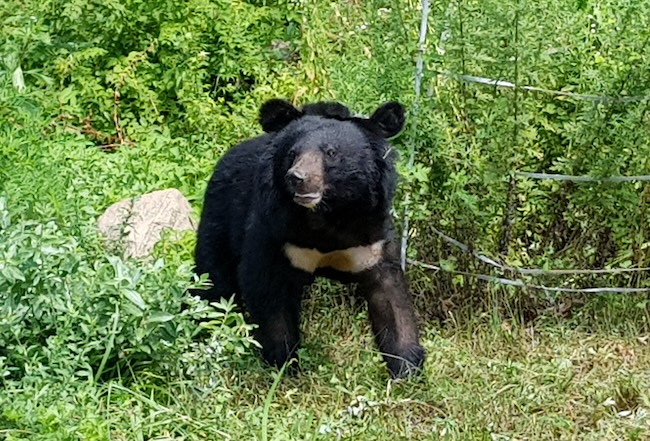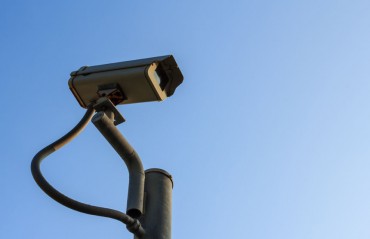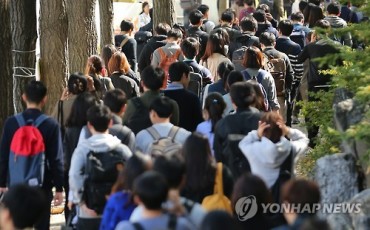
Endangered Asiatic black bears (Image courtesy of the National Park Institute for Wildlife Conservation)
SANCHEONG, Jun. 3 (Korea Bizwire) – Recent sightings of endangered Asiatic black bears along hiking trails in Jirisan National Park have sparked concerns about potential human-wildlife conflicts.
However, authorities emphasize that the bears’ docile nature and wariness make such incidents highly unlikely if hikers stay on designated trails.
According to the Jirisan National Park office in South Gyeongsang Province, the park is currently home to 89 Asiatic black bears, including four newborn cubs this year. These bears typically roam between Jirisan and the adjacent Deogyusan mountains.
Known for their shy demeanor and preference for dense forests, encounters between hikers and Asiatic black bears are extremely rare.
However, during the mating season from June to August, when their activity radius widens as they search for mates, the chances of an occasional sighting slightly increase.
On May 23, a male bear was spotted near the Yeonhacheon-Byeoksoryeong trail in Jirisan. The bear unintentionally wandered close to the trail but immediately turned and fled upon seeing hikers, exhibiting no aggressive behavior.
Despite this year’s isolated sighting, even researchers monitoring the bears rarely encounter them directly.
An analysis of over 30,000 Asiatic black bear location data points in Jirisan from 2014 to 2023 revealed only a 0.44% probability of the bears being within 10 meters of hiking trails, 3.1% within 100 meters, and 62.35% within 1 kilometer – indicating that the further from trails, the higher the likelihood of an encounter.
While face-to-face encounters may occur, the bears pose minimal threat due to their herbivorous diet and occasional scavenging habits, rarely actively hunting prey. No attacks by Asiatic black bears on humans have been reported in South Korea.
However, hikers should avoid potentially provoking actions like taking photos or offering food if they encounter a bear. Wearing bear bells and hiking in groups of at least two people is recommended for safety.
If a bear is spotted at a distance, quietly leaving the area is advised. For closer encounters, maintaining eye contact and backing away slowly, without turning one’s back, is crucial, as bears can run at speeds of up to 50-60 km/h – faster than Usain Bolt’s top speed of around 40 km/h.
“The Asiatic black bear population in Jirisan is closely monitored, and their movements are carefully tracked,” said Jung Woo-jin, director of the National Park’s Wildlife Conservation Center.
“These gentle bears are seldom seen, so sticking to designated trails ensures safety. There’s no need for unnecessary fear during regular hiking activities.”
Lina Jang (linajang@koreabizwire.com)






